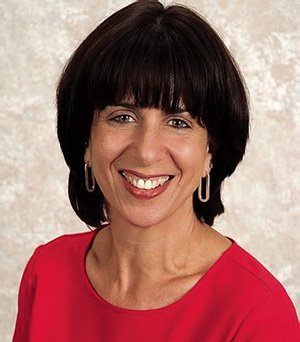
The emotional anticipation of the chagim begins sometime near the end of August. We anticipate the days until Rosh Hashanah and then more literally count the 10 days of repentance from Rosh Hashanah until Yom Kippur. Many of my clients discussed with me their concerns about Yom Kippur, both from a spiritual perspective and a physical one. Managing to balance the spiritual and the physical on this unique day is indeed a challenge. How does one reconcile the mitzvah of eating on Erev Yom Kippur (a favorite mitzvah for many!), a physical experience observed throughout the day, with the intense emotional experience of fasting and praying for close to 26 hours on Yom Kippur itself, which then concludes with the inspired cries of Shema Yisrael and the piercing sound of a tekiah from the shofar, followed by joyous singing and even dancing in some places? In my shul, after the conclusion of Maariv, we then have the practice to break the fast together as one, enjoying each other’s friendship and company as we eat.
By the time you read this article, you will have experienced the beauty and awe of Yom Kippur and probably felt a sense of relief that the day is behind you and that you do not have to think about Yom Kippur again for another year. But the holidays, of course, are far from over. After the break-fast, when my family returns home from shul, we look forward to hearing the sound of metal poles falling on concrete all over the neighborhood, as the sukkah season is suddenly upon us, and with the clanging of metal and the banging of hammers our emotional energy shifts slightly from the spiritual back to the physical.
Sukkot is a chag on which eating is an integral part of the basic Yom Tov experience. One of the main reasons for building a sukkah is to be able to eat in it. Sukkot is a wonderful chag, enjoyed by children and adults alike. Sitting outside at night, often bundled up in a warm sweater while eating hot soup, is part of the Sukkot experience, at least in this part of the world. The special foods that we cook for our children (does everybody make stuffed cabbage?) can create a positive memory in connection with the chag; some people hold on to that for their entire lives. While some sleep in the sukkah as well, for the vast majority of us, most of the time in the sukkah is spent engaging in good conversation while eating a delicious hot meal, which is actually an often-overlooked theme of the entire month. By the time you sit down to eat your first meal in the sukkah, you have already partaken of 10 festive meals this month, with another 15 to go (maybe more, depending upon custom); many of them involve washing, eating bread with honey (both to ensure a sweet year and because it tastes delicious), and many other delicacies.
Long hours in shul, late-night eating and late bedtimes are not in sync with the health-conscious consumer’s lifestyle. So, what can we do to have a sweet year without increasing our risk for diabetes and still enjoy the chagim? Here are some ideas. Try to limit your intake of challah, and don’t drown each piece in honey. If you are the cook, try to cut back on recipes that call for added sugar. Fill up your plate once; avoid taking seconds. Choose white meat over dark, skip the sauces. Focus your food choices to protein and vegetables. Keep your mouth busy by sipping on hot tea or on water or seltzer. Try baking apples with cinnamon for dessert; they take no time to prepare and they taste great warm. Remember to drink plenty of water. Plan to catch up with a friend whom you never have time to talk to by taking a long walk together in the afternoon. During Chol Hamoed, plan a family activity that requires movement, e.g., bike riding, a hike in the park or an outing to the Bronx Zoo.
The returning sound of clanging poles at the end of the eight days will mean that the holiday season is over. We will have recited many prayers, fasted twice, eaten many big meals, and danced and sung together, but eventually it will be time to return to our regular lives. If you feel like you over-indulged on the physical components of these chagim, try to get back on track once Yom Tov is over and regain your balance of the spiritual and the physical.
Wishing you and your family a chag sameach.
By Beth S. Taubes
Beth S. Taubes, RN, OCN, CBCN, certified health coach, is the director of Wellness Motivations and will be offering a special post-holiday 30-day “My Challenge” program to help you get back in shape, in addition to nutrition consultations, yoga and individual and group fitness classes. She can be reached at [email protected] or at wellnessmotivationsbt.com.













